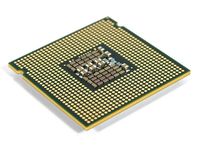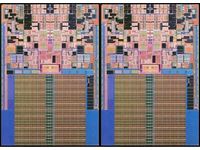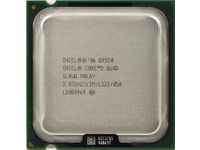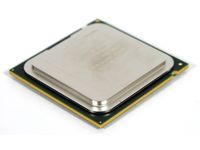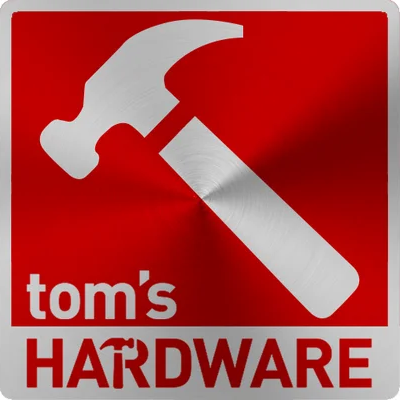Updated CPU Charts 2008: AMD Versus Intel
Intel: Takes The Performance Crown
The fastest Intel processor at the moment is the Core 2 Extreme QX9770, which is manufactured on a 45 nm process and consists of two 3.20 GHz dual-core processors. Each of the two CPUs accesses a 6 MB shared L2 cache. So, in total, the processor offers four computing cores and 12 MB of L2 cache. The front side bus of this CPU has been raised to 400 MHz (1600 MHz effective) and is thus faster than all other "Extremes." Officially, this processor is only supported by the X48 high-end chip set.
If the performance of a QX9770 isn’t enough for you, you can always try the Skulltrail platform, which has a dual-socket motherboard that houses two of these processors. Since Skulltrail requires the workstation Socket 771, the identical CPUs go by another name. A Skulltrail configuration gets you a total of eight cores and 24MB of L2 cache.
Despite it’s new 45nm manufacturing process, Intel’s flagship models are anything but power-friendly. A QX9770 has a 136 watt TDP. The fastest model, the QX9775 tailored to dual-socket boards, needs as much as 150 watts.
Switching focus to the older 65 nm models, which Intel still sells, its dual-core Core 2 Duo E6600 is considered very attractive. It has 4 MB L2 cache and is clocked at 2.40 GHz. The quad-core model Core 2 Quad Q6600 runs at the exact same frequency. Both processors can be overclocked easily to high levels. After the introduction of its 45 nm processors, Intel’s aforementioned 65 nm CPUs fell in price considerably, which makes them something of a bargain due to the excellent cost/performance ratio.
Within the 45 nm segment of Intel’s product lineup, the most popular models are the Core 2 Duo E8400 at 3.00 GHz and the Core 2 Quad Q9450 at 2.66 GHz. These can even be overclocked better than the 65 nm processors.
All 45 nm processors have SSE4.1 capabilities, but these extensions do not yet have the full range of commands Intel has mapped out—that will only happen in the coming generation of Nehalem-based processors. Opinions regarding the extensions’ effect on acceleration of video processing are divided. Some software developers already offer support, whereas others are yet to see a performance benefit.
Intel carries out stepping updates to its processor families from time to time. In some cases, we found considerable improvements to energy consumption. For example, in the Pentium dual-core series with the M0 stepping, Intel was able to reduce the energy requirements by as much as 29%.
Get Tom's Hardware's best news and in-depth reviews, straight to your inbox.
Current page: Intel: Takes The Performance Crown
Prev Page Introduction Next Page AMD: Still Playing Catch-UpTom's Hardware is the leading destination for hardcore computer enthusiasts. We cover everything from processors to 3D printers, single-board computers, SSDs and high-end gaming rigs, empowering readers to make the most of the tech they love, keep up on the latest developments and buy the right gear. Our staff has more than 100 years of combined experience covering news, solving tech problems and reviewing components and systems.
